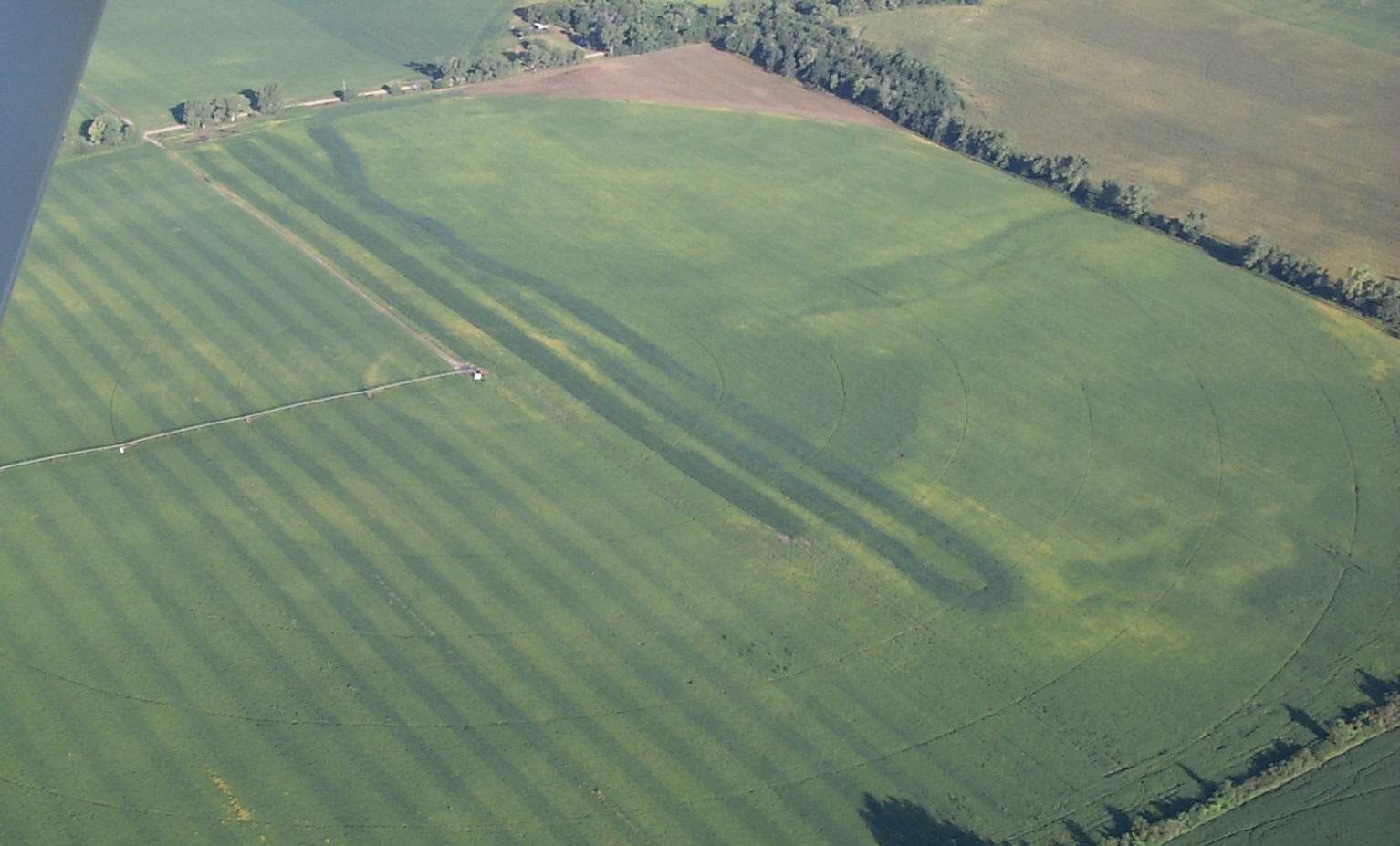
Manure is often an under-valued resource. When well-managed and properly applied, it reaps many benefits. The benefits can be seen in the photo to the right, but are not captured in much of the field because of errors in application.
- Manure as a nutrient source can be a substitute for purchased fertilizers
- Manure increases crop productivity and can be used in gardens and flowerbeds, not just agriculture.
- The organic matter in manure improves water infiltration into the soil and reduces runoff and erosion. For this reason, when manure replaces synthetic fertilizers at agronomic phosphorus rates, there is often reduced risk of phosphorus runoff.
- Some manure types have a liming effect and reduce soil acidity.
- The P-Index rating is often reduced.
Manure tends to reduce sediment and water loss from a field, but the concentration of phosphorus in the runoff is typically high when soil test P is high. Manure application may, therefore, result in either increased or decreased phosphorus runoff.
Phosphorus runoff loss may be reduced with manure application due to reduced erosion and runoff in cases of agronomically moderate application rates and moderate soil test P. The combination of land-applying higher solids-manures and good conservation best-management-practices can significantly reduce erosion and runoff and maintain phosphorus losses at an acceptable level. However, if soil test P is excessively high, the reductions in erosion and runoff due to manure application are often not sufficient to prevent unacceptable losses of P.
*Cattle manure as fertilizer: One ton contains approximately 12 pounds of nitrogen. About 25% of this is immediately available to the crop. So, if 35 tons of cattle manure were spread over an acre of land, the available rate would be approximately 105 pounds of N for immediate crop use. If that amount of nitrogen had to be purchased, it could cost more than $68 per acre at 2008 prices ($0.65/lb), and this does not account for the other nutrients found in manure or the amount of nitrogen available to the crop in years to come. Phosphorus is also found in cattle manure. If you had to apply phosphorus as well as nitrogen, it could cost an additional $127.40 per acre if applied at the rate equivalent to the available amount (2.6 lb/ton of manure) in the manure using projected 2009 prices ($1.40/lb). In addition to nitrogen and phosphorus, manure contains zinc and sulfur, also important nutrients for crops.
The Nebraska Manure Value Calculator is a spreadsheet tool that calculates the value of a manure source for a specific field.
Livestock and Poultry Environmental Learning Center on the national e-Xtension site. "Best of the Best" educational and research resources from land grant universities including Nebraska; US EPA, and USDA.
*Requires Acrobat Reader. Download free.
Information presented within the livestock manure management section of this Water Web site has been authored and/or reviewed by University of Nebraska-Lincoln Manure Management Team members Leslie Johnson, Rick Koelsch, Charles Shapiro and Charles Wortmann.
Sign up for updates from UNL Water